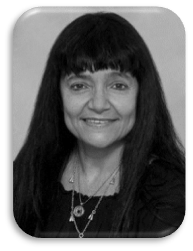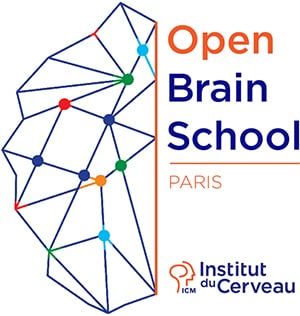
Workshop 2024
With the aim of further strengthening the CFNI, one of the key initiatives proposed is the organization of yearly neuroimmunology symposia, which are to be organized in rotating cities across France.
Click here to sign up
Discover the French Neuroimmunology Club

General information
- WORKSHOP PRESENTATION
- PROGRAM AND EVENT SCHEDULE
- PRICE
- VENUE
- SPONSORS
- PRESENTATION OF THE CLUB AND BOARD MEMBERS
CFNI LOCAL ORGANIZING COMMITTEE:
With the aim of further strengthening the CFNI, one of the key initiatives proposed is the organization of yearly neuroimmunology symposia, which are to be organized in rotating cities across France.
The first inaugural symposium took place in Lille in 2023 and was a great success, as it has already received highly positive feedback from participants, emphasizing its scientific quality and success.
The next meetings are already planned in Paris (2024), Toulouse (2025) and Nantes (2026).
These symposia will provide an excellent opportunity for researchers interested in neuroimmunology to present their work, exchange ideas and foster collaborations.
OBJECTIVE :
The primary objective of the neuroimmunology meeting is to gather world renowned experts, researchers and clinicians from various disciplines involved in neuroimmunology to facilitate the exchange of knowledge, foster collaborations and promote advancements in the field. The meeting will encompass a broad spectrum of topics, with each session structured to begin with a keynote speaker, followed by a series of younger speakers selected based on the quality of their submitted abstract. One important aim of the club is the promotion of young and aspiring scientists, by providing them with opportunities to showcase their research through poster and oral presentations.
 |
 |
| Chair: | Co-Chair: |
|
Violetta Zujovic (Paris Brain Institute, ICM, Paris) |
Guillaume Dorothée (Centre de Recherche Saint Antoine, Paris) |
| 23rd of MAY 2024 | 24th of MAY 2024 |
|
13:00 Badge pick up 13:15 Welcoming words 13:30 Neurodevelopment Keynote speaker: Aleksandra Deczkowska 3 Selected Oral presentations 14:45 Neuroimmunological aspects of Multiple Sclerosis Keynote speaker: Robin Franklin 3 Selected Oral presentations 16:00 POSTER SESSION/ Coffee Break 17:15 Nervous system Infections Keynote speaker: Jasmine Herz 3 Selected Oral presentations 18:00 COCKTAIL/DINER |
9:00 Peripheral/ Neuro-Immune Cross talk Keynote speaker: Nicolas Gaudenzio 3 Selected Oral presentations 10:15 Neuro-immune interactions in Brain Tumors Keynote speaker: Maria Castro 3 Selected Oral presentations 11:30 Neuroimmunological aspects of Neurodegenerative Diseases Keynote speaker: Michael Heneka 3 Selected Oral presentations 12:45: PRIZES/ Closing words 13:00: LUNCH
|
Student |
Free |
Post-Doc |
Free |
PI |
100€ |
Institut du Cerveau
Hôpital Pitié, 47 Bd de l’Hôpital, 75013 Paris
https://maps.app.goo.gl/ssMq5LF3hW6fddkB6
 |
 |
 |
 |
NeuroImmunology is a rapidly growing field that investigates the intricate interplay between the immune system and the nervous system. It is now widely recognized that there is active molecular and cellular communication between the two systems. Multiple sclerosis (MS) research has been at the forefront of significant breakthroughs in neuroimmunology. Many of the findings in MS have served as foundational pillars in understanding the role of the immune system in other neurological disorders. This realization has led to significant advancements in our understanding of nervous system development, functioning as well as in our comprehension of various diseases, which has opened up new avenues for potential therapeutic interventions.
The growing interest in Neuroimmunology led to the creation of the “Club Français de NeuroImmunologie” (CFNI) coordinated by a “bureau” currently composed of Nicolas Blanchard, Guillaume Dorothée, Lennart Mars and Violetta Zujovic.
The CFNI is a recognized and influential entity in the field of neuroimmunology in France, fostering collaborations, promoting interdisciplinary approaches, and serving as a liaison with national and international neuroimmunology societies such as the Société Française d’Immunologie (SFI), the Société des Neurosciences (SFN), the European society of Neuroimmunology (ESNI) as well as the International Society of NeuroImmunology (ISNI).
 |
 |
 |
 |
|
Lennart Mars Pasteur Lille |
Nicolas Blanchard (Infinity, Toulouse, FR) |
Guillaume Dorothée (Centre de Recherche Saint Antoine, Paris) |
Violetta Zujovic (Paris Brain Institute, ICM, Paris) |
Detailed program
- Session 1: Neurodevelopment
- Session 2: Neuroimmunological aspects of Multiple Sclerosis
- Session 3: Nervous system Infections
- Session 4: Peripheral/ Neuro-Immune Cross talk
- Session 5: Neuroimmune interactions in Brain Tumors
- Session 6 : Neuroimmunological aspects of Neurodegenerative Diseases
IMMUNE SIGNALS AT THE CHOROID PLEXUS SHAPE BRAIN FUNCTION THROUGHOUT LIFE.
|
Aleksandra Deczkowska,
Institut Pasteur (FR)
|
In contrast to other organs, the CNS is surrounded by specialized barriers that limit its contact with immune cells and microbial products in the blood. However, such factors dynamically shape brain function in homeostasis and disease. Because of this unusual anatomy, the pathways of blood-brain communication are still poorly understood, while this understanding would provide fundamental insight into brain function regulation and neurological disease mechanisms. The choroid plexus (CP) epithelium is a monolayer barrier tissue, which on the side facing the blood can sense such peripheral factors, and on the side facing the brain, produces the cerebrospinal fluid (CSF)–a liquid carrying nutrients and signaling molecules, which contacts nearly all brain cells, and ensures brain homeostasis. We study how the peripheral immune and microbial factors may shape brain function indirectly, via regulation of the CSF properties at the CP epithelium in brain development, normal physiological function, aging, and disease. Our goal is to identify fundamental principles of physiological brain regulation by the peripheral factors to pave the way for future investigation of the gut-blood-CP-brain communication circuit in neurological disease. |
IMMUNOGENIC ANTIGEN PRESENTATION BY MICROGLIA FROM EXTRACELLULAR MYELIN mRNA UPTAKE – A NEW MECHANISM FOR DISEASE PROGRESSION.
|
Robin Franklin, Altos Labs – Cambridge Institute of Science (UK)
|
While the interaction of the adaptive and innate immune systems in the pathogenesis of autoimmune disorders of the central nervous system is well defined, the mechanisms by which microglia trigger a T cell response remain unclear. We and others reported the surprising finding that microglia in Multiple Sclerosis (MS) lesions contained intact mRNAs for myelin proteins. In this talk I will describe how, in the context of myelin debris in animal models of experimental demyelination, microglia phagocytose and process intact oligodendrocyte-encoded and exogenous mRNA transcripts in a CD36 dependent manner. We used orthologous and tagged mRNAs within myelin debris to demonstrate this combination uniquely promotes efficient uptake of mRNA, translation and presentation of proteins that leads to antigen-specific activation of adaptive CD4 and CD8 immune cells. These new data indicate that microglia phagocytose and translate mRNAs when presented with myelin debris leading to T cell activation, a novel mechanism potentially explaining propagation and even initiation of MS. |
MENINGEAL T CELLS AND THE NEUROIMMUNE AXIS IN SHAPING BEHAVIORAL RESPONSES TO PATHOGEN EXPOSURE AND AGING
|
Jasmine Herz, Washington university (US)
|
The adaptive immune system relies on formation of the memory of past microbial challenges to accelerate protective immune responses in the event of reinfection. This memory is accomplished in part by the retention of antigen-specific B and T cells within barrier tissues. We conducted an extensive molecular and functional analysis of meningeal T cells to test the hypothesis that the meninges in the brain sense and respond to internal and external cues throughout life, and that alterations in the meningeal T cell repertoire alter brain function. Using models of pathogen exposure, we describe a neuroimmune axis in which antigen experienced resident T cell subsets dynamically record immune perturbations, which resulted in behavioral abnormalities that were exacerbated with aging. Our findings elucidate molecular properties of T cells that survey the brain borders under both homeostatic and pathological conditions and provide insights linking CNS immune surveillance with memory.
|
HARNESSING SKIN NEUROIMMUNE INTERACTIONS IN MICE AND HUMANS: FROM FETAL IMPRINTING TO ALLERGIC INFLAMMATION
|
Nicolas Gaudenzio, Infinity (FR)
|
The skin is the largest organ of the body and is composed of a broad diversity of lymphoid and myeloid cells that interact with an organized network of structural elements and sensory neurons to form a tightly-regulated ecosystem. Combining genetic models and biostabilized natural human skin, we unbiasedly identify bidirectional communication circuits between subsets of sensory neurons and specialized immune populations in mice and humans. |
THE TUMOR IMMUNE MICROENVIRONMENT IN MUTANT IDH1 GLIOMAS IS EPIGENETICALLY REMODELED ENHANCING THE EFFICACY OF IMMUNE MEDIATED THERAPIES
|
Maria Castro, University of Michigan Medical School (US)
 |
Mutation in isocitrate dehydrogenase (mIDH) is a common genetic lesion encountered in glioma patients. Approximately 90% of IDH1 mutations occur in exon 4 at codon 132, resulting in a single amino acid from arginine to histidine (R132H). Less common IDH2 mutations occur in an analogous codon at position R172. IDH1/2 mutations are always heterozygous, exerting a dominant gain of function enzymatic activity which leads to the production of 2-hydroxyglutarate (2HG). Excessive 2HG production causes DNA hypermethylation via inhibition of methylcytosine dioxygenase TET2, and also promotes histone hypermethylation through competitive inhibition of α-ketoglutarate (αKG)-dependent Jumonji-C histone demethylases. This leads to epigenetic reprogramming the transcriptome within the mIDH1 glioma cells. Several studies suggested that mIDH1 may play a critical role in shaping the immunological landscape of the tumor immune microenvironment (TME). We demonstrate that mutant isocitrate-dehydrogenase 1 (mIDH1) synthetizes the oncometabolite 2-hydroxyglutarate (2HG), which elicits epigenetic reprogramming of the glioma cells’ immune transcriptome leading to the reversion of the glioma immunosuppressive microenvironment.
We show that the efficacy of immune-stimulatory gene therapy (TK/Flt3L) is enhanced in mIDH1 gliomas, due to the reprogramming of the myeloid cells compartment infiltrating the TME. We uncovered that the immature myeloid cells-infiltrating the mIIDH1 TME are mainly non-suppressive neutrophils and pre-neutrophils. Myeloid cells’ reprogramming was triggered by granulocyte colony-stimulating factor (G-CSF) secreted by mIDH1 glioma stem-like cells. Blocking G-CSF in mIDH1 glioma-bearing mice restores the inhibitory potential of myeloid cells, accelerating tumor progression. Also, we demonstrate that G-CSF reprograms bone-marrow granulopoiesis resulting in non-inhibitory myeloid cells within mIDH1 glioma TME and enhancing the efficacy of immune-stimulatory gene therapy. In conclusion, out results uncover an important role of mIDH1 on reprogramming the phenotypic and functional diversity of myeloid cells in glioma TME, a feature that can be harnessed to enhance the efficacy of immunotherapies in glioma patients. |
NEURONAL ESCAPE FROM INTRACELLULAR PROTEIN AGGREGATION TOXICITY THROUGH INNATE IMMUNE INTERACTION
|
Michael Heneka, Luxembourg Centre for Systems Biomedicine (LUX)
|
While the brain has been considered an immune-privileged organ, increasing evidence suggests that innate immune cells are intimately involved in neurodegenerative disease evolution and progression. Microglia play a pivotal role for this cerebral innate immune response and are activated by binding of protein aggregates to pattern recognition receptors. This binding may activate pathways that are involved in phagocytosis and degradation in order to protect neurons from damage. On the other hand, immune activation of microglia may lead to the release of inflammatory mediators and distracts microglia from their physiological functions and tasks. Microglial distribution of neurotoxic beta-sheet structured cargo may help stressed cells to cope with the inflammatory activation and contribute to the overall successful clearance. Importantly, disease causing mutations and risk polymorphisms for neurodegenerative disease such as Parkinson’s disease and Alzheimer’s disease are being tested for the potential to influence cargo distribution through tunneling nanotubes. Likewise, immune cells help each other by sharing intact mitochondria in order to cover the increased energy demand during an inflammatory challenge. Similar mechanisms may be in place between microglia and further brain cells including astrocytes and neurons. The capability of microglia providing such help to neighboring cells may be key to prevent neurodegeneration and represent a new therapeutic target. |





